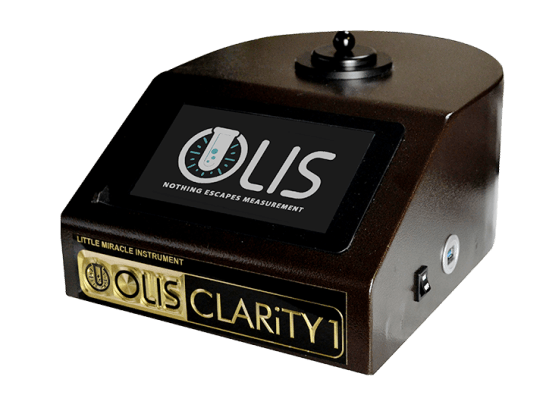The 5-Second Trick For Circularly Polarized Luminescence
Table of ContentsThe Basic Principles Of Uv/vis The Buzz on Circularly Polarized LuminescenceThings about Circularly Polarized LuminescenceThe Definitive Guide to Uv/vis/nirThe Ultimate Guide To Spectrophotometers

Spectrophotometry is a tool that hinges on the quantitative analysis of molecules depending on how much light is soaked up by colored substances.
How Uv/vis/nir can Save You Time, Stress, and Money.
A spectrophotometer is typically used for the measurement of transmittance or reflectance of options, transparent or nontransparent solids, such as refined glass, or gases. Lots of biochemicals are colored, as in, they soak up noticeable light and therefore can be measured by colorimetric treatments, even colorless biochemicals can typically be transformed to colored substances suitable for chromogenic color-forming reactions to yield compounds suitable for colorimetric analysis.: 65 Nevertheless, they can likewise be developed to measure the diffusivity on any of the noted light varieties that usually cover around 2002500 nm using various controls and calibrations.
An example of an experiment in which spectrophotometry is used is the decision of the equilibrium constant of a solution. A particular chemical response within a service might take place in a forward and reverse instructions, where reactants form products and items break down into reactants. At some time, this chemical response will reach a point of balance called a balance point.
8 Simple Techniques For Spectrophotometers
The amount of light that goes through the service is indicative of the concentration of particular chemicals that do not permit light to go through. The absorption of light is due to the interaction of light with the electronic and vibrational modes of particles. Each kind of particle has an individual set of energy levels associated with the makeup of its chemical bonds and nuclei and hence will take in light of particular wavelengths, or energies, leading to unique spectral properties.
They are commonly used in many markets including semiconductors, laser and optical production, printing and forensic evaluation, as well as in laboratories for the study of chemical substances. Spectrophotometry is often utilized in measurements of enzyme activities, decisions of protein concentrations, determinations of enzymatic kinetic constants, and measurements of ligand binding reactions.: 65 Eventually, a spectrophotometer is able to identify, depending on the control or calibration, what substances are present in a target and exactly how much through calculations of observed wavelengths.
Created by Arnold O. Beckman in 1940 [], the spectrophotometer was created with the help of his colleagues at his company National Technical Laboratories established in 1935 which would end up being Beckman Instrument Business and eventually Beckman Coulter. This would come as a solution to the previously produced spectrophotometers which were unable to soak up the ultraviolet correctly.
Not known Facts About Spectrophotometers
It would be discovered that this did not offer acceptable outcomes, therefore in Design B, there was a shift from a useful site glass to a quartz prism which enabled for better absorbance outcomes - circularly polarized luminescence (http://connect.releasewire.com/company/olis-clarity-343997.htm). From there, Design C was born with a modification to the wavelength resolution which wound up having three systems of it produced
It was produced from 1941 to 1976 where the cost for it in 1941 was US$723 (far-UV devices were a choice at extra expense). In the words of Nobel chemistry laureate Bruce Merrifield, it was "most likely the most crucial instrument ever developed towards the advancement of bioscience." Once it ended up being ceased in 1976, Hewlett-Packard created the very first commercially available diode-array spectrophotometer in 1979 called the HP 8450A. It irradiates the sample with polychromatic light which the sample absorbs depending on its properties. Then it is sent back by grating the photodiode range which detects the wavelength region of the spectrum. Ever since, the creation and implementation of spectrophotometry devices has actually increased immensely and has ended up being one of the most ingenious instruments of our time.

The Only Guide for Uv/vis/nir
Historically, spectrophotometers utilize a monochromator consisting of a diffraction grating to produce the analytical spectrum. The grating can either be movable or repaired. If a single detector, such as a photomultiplier tube or photodiode is used, the grating can be scanned step-by-step (scanning spectrophotometer) so that the detector can measure the light strength at each wavelength (which will represent each "step").
In such systems, the grating is repaired and the intensity of each wavelength of light is determined by a various detector in the array. When making transmission measurements, the spectrophotometer quantitatively compares the fraction of light that passes through a referral service and a test option, then digitally compares the intensities of the two signals and calculates the portion of transmission of the sample compared to the reference requirement.
